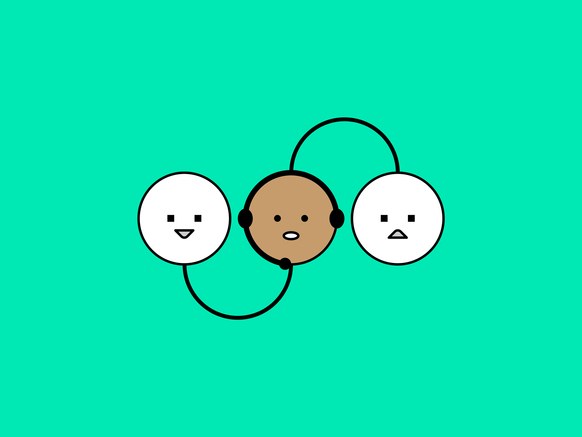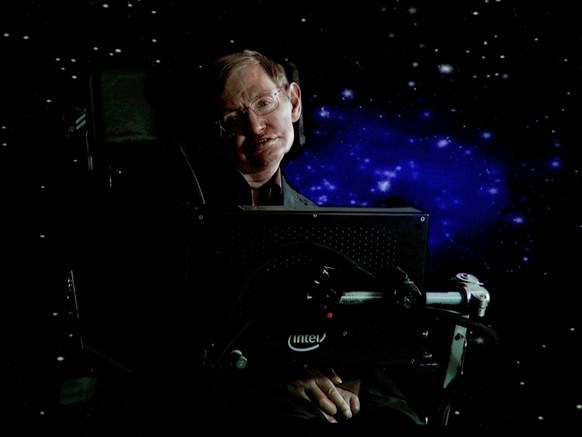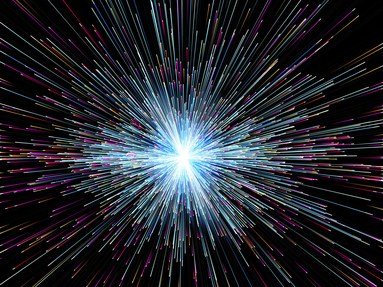So, your company has fully internalized the message that businesses need to be more agile. You’ve made the most of cloud-based computing, an agile workforce and have gotten your employees to think like disruptors. You’re on the road to enabling enterprise Digital Transformation. Continue reading “A New, Agile Approach to Security: Cyberesiliency”
Europe’s New Privacy Law Will Change the Web, and More
Consumers have long wondered just what Google and Facebook know about them, and who else can access their personal data. But internet giants have little incentive to give straight answers — even to simple questions like, “Why am I being shown this ad?” Continue reading “Europe’s New Privacy Law Will Change the Web, and More”
This Call May Be Monitored for Tone and Emotio
We all know how it feels to be low on energy at the end of a long work day. Some call-center agents at insurer MetLife are watched over by software that knows how it sounds. Continue reading “This Call May Be Monitored for Tone and Emotio”
The Uneven Gains of Energy Efficiency
This story originally appeared on CityLab and is part of the Climate Desk collaboration.
On a rainy day in New Orleans, people file into a beige one-story building on Jefferson Davis Parkway to sign up for the Low-Income Heating and Energy Assistance Program (LIHEAP), a federal grant that helps people keep up with their utility bills. Continue reading “The Uneven Gains of Energy Efficiency”
Stephen Hawking, a Physicist Transcending Space and Time, Passes Away at 76
For arguably the most famous physicist on Earth, Stephen Hawking—who died Wednesday in Cambridge at 76 years old—was wrong a lot. He thought, for a while, that black holes destroyed information, which physics says is a no-no. He thought Cygnus X-1, an emitter of X-rays over 6,000 light years away, wouldn’t turn out to be a black hole. (It did.) He thought no one would ever find the Higgs boson, the particle indirectly responsible for the existence of mass in the universe. (Researchers at CERN found it in 2012.)
But Hawking was right a lot, too. He and the physicist Roger Penrose described singularities, mind-bending physical concepts where relativity and quantum mechanics collapse inward on each other—as at the heart of a black hole. It’s the sort of place that no human will ever see first-hand; the event horizon of a black hole smears matter across time and space like cosmic paste. But Hawking’s mind was singular enough to see it, or at least imagine it.
His calculations helped show that as the young universe expanded and grew through inflation, fluctuations at the quantum scale—the smallest possible gradation of matter—became the galaxies we see around us. No human will ever visit another galaxy, and the quantum realm barely waves at us in our technology, but Hawking envisioned them both. And he calculated that black holes could sometimes explode, an image that would vex even the best visual effects wizard.
More than that, he could explain it to the rest of us. Hawking was the Lucasian Chair of Mathematics at Cambridge until his retirement in 2009, the same position held by Isaac Newton, Charles Babbage, and Paul Dirac. But he was also a pre-eminent popularizer of some of the most brain-twisting concepts science has to offer. His 1988 book A Brief History of Time has sold more than 10 million copies. His image—in an electric wheelchair and speaking via a synthesizer because of complications of the degenerative disease amyotrophic lateral sclerosis, delivering nerdy zingers on TV shows like The Big Bang Theory and Star Trek: The Next Generation—defined “scientist” for the latter half of the 20th century perhaps as much as Albert Einstein’s mad hair and German accent did in the first half.
Possibly that’s because in addition to being brilliant, Hawking was funny. Or at least sly. He was a difficult student by his own account. Diagnosed with ALS in 1963 at the age of 21, he thought he’d have only two more years to live. When the disease didn’t progress that fast, Hawking is reported to have said, “I found, to my surprise, that I was enjoying life in the present more than before. I began to make progress with my research.” With his mobility limited by the use of a wheelchair, he sped in it, dangerously. He proved time travel didn’t exist by throwing a party for time travelers, but not sending out invitations until the party was over. No one came. People learned about the things he got wrong because he’d bet other scientists—his skepticism that Cygnus X-1 was a black hole meant he owed Kip Thorne of Caltech a subscription to Penthouse. (In fact, as the terms of that bet hint, rumors of mistreatment of women dogged him.)
Hawking became as much a cultural icon as a scientific one. For a time police suspected his second wife and one-time nurse of abusing him; the events became the basis of an episode of Law and Order: Criminal Intent. He played himself on The Simpsons and was depicted on Family Guy and South Park. Eddie Redmayne played Hawking in a biopic.
In recent years he looked away from the depths of the universe and into humanity’s future, joining the technologist Elon Musk in warning against the dangers of intelligent computers. “Unless we learn how to prepare for, and avoid, the potential risks, AI could be the worst event in the history of our civilization,” Hawking reportedly said at a talk last year. “It brings dangers, like powerful autonomous weapons, or new ways for the few to oppress the many. It could bring great disruption to our economy.” In an interview with WIRED UK, he said: “Someone will design AI that replicates itself. This will be a new form of life that will outperform humans.”
In 2016 he said that he thought humanity only had about 1,000 years left, thanks to AI, climate change, and other (avoidable) disasters. Last year he reduced that horizon exponentially—100 years left, he warned, unless we changed our ways.
Hawking was taking an unusual step away from cosmology, and it was easy, perhaps, to dismiss that fear—why would someone who’d help define what a singularity actually was warn people against the pseudo-singularity of Silicon Valley? Maybe Hawking will be as wrong on this one as he was about conservation of information in black holes. But Hawking always did see into realms no one else could—until he described them to the rest of us.
Hawking’s Influence
- In 2014, WIRED UK interviewed Hawking after a lecture, talking about the ‘how’ and ‘why’ questions he always asked himself.
- Even beyond his own work, Hawking propelled technology forward: Intel worked with him to develop a novel speech synthesizer.
- Today, you can use that speech software for free.
Continue reading “Stephen Hawking, a Physicist Transcending Space and Time, Passes Away at 76”
To Understand the Universe, Physicists Are Building Their Own
The Big Bang is by far the most popular model of our universe’s beginnings, but even its fans disagree about how it happened. The theory depends on the existence of a hypothetical quantum field that stretched the universe ultra-rapidly and uniformly in all directions, expanding it by a huge factor in a fraction of a second: a process dubbed inflation. But that inflation or the field responsible for it—the inflaton—is impossible to prove directly. Which is why Weinfurtner wants to mimic it in a lab.
If the Big Bang theory is right, the baby universe would have been created with tiny ripples—so-called ‘quantum fluctuations’—which got stretched during inflation and turned into matter and radiation, or light. These fluctuations are thought to have eventually magnified to cosmic size, seeding galaxies, stars, and planets. And it’s these tiny ripples that Weinfurtner wants to model with that massive superconducting magnet. Inside, she’ll put a circular tank, some 6 centimeters in diameter, filled with layered water and butanol (the liquids have different densities, so they don’t mix).
Then, her group of researchers will kick in the artificial gravity distortions. “The strength of the magnetic field varies with its position,” says Richard Hill, one of the paper’s co-authors. “By moving the pool to different regions of the field, the effective gravitational force can be increased or decreased,” he says, “and can even be turned upside-down.”
By varying gravity, the team hopes to create ripples—but unlike those on a pond, the distortions will appear between the two liquids. “By carefully adjusting the speed of the ripples we can model an inflating universe,” says another team member, Anastasios Avgoustidis. In cosmic inflation, space rapidly expands while the ripples of matter propagate at a constant speed—and in the experiment, the speed of the ripples rapidly decreases as the liquid’s volume remains constant. “The equations describing the propagation of ripples in these two scenarios are identical,” Avgoustidis says.
That’s important: If the resulting fluctuations look as if they might trigger structures like those found in today’s universe, then we may have had a glimpse of how inflation worked.
Simulations are being used to study other aspects of inflation, too. A few years ago, a team led by Christoph Westbrook of CNRS (The French National Center for Scientific Research) in Paris studied the production of quantum particles by ‘wiggling’ a ring Bose Einstein condensate—a state of matter in which the atoms have been cooled to near absolute zero, making them behave as a single quantum object. During inflation, the temperature of the universe dropped drastically, before starting to rise again when the inflation ceased with the process called ‘reheating’—leading to the ordinary Big Bang expansion.
Another experiment last October, led by physicist Stephen Eckel at the Joint Quantum Institute at the National Institute of Standards and Technology and University of Maryland, also used a Bose Einstein condensate to observe the stretching of sound waves—analogous to the stretching, or redshifting, of light that happens as the universe expands. The team also observed an effect similar to the reheating process.
Weinfurtner says that her ‘novel’ setup can work without a Bose Einstein condensate. That means that the system will be too hot to observe quantum fluctuations directly, says Unruh. But the authors argue that it will be possible to observe the fluctuations via the thermal noise in their system—an analog of quantum noise.
Their approach, say the authors, will allow them to mimic a long expansion phase, achieving—using the technical language—‘many e-folds,’ a parameter that measures the duration of inflation. Researchers believe that inflation increased the size of the universe by more than a factor of 10^26—or more than 60 e-folds—in just a fraction of a second. The new experiment, if successful, would simulate inflation for much longer period than previous lab set-ups, or have “many more e-folds than any other, enough to put the results beyond doubt,” says Ian Moss of the University of Newcastle. “You need some time to elapse for the system to forget its initial conditions and settle down to the state governed by inflationary fluctuations,” he says.
“It is possible that they will uncover new physics that help to inform future cosmological models,” says Eckel. “Or, on the reverse, help to test some aspect of future cosmological models.”
The real test of inflation would be, Loeb says, the production of the substance that propelled it—the inflaton—in the lab. But this would require reaching energies up to a trillion times larger than those achieved in our most powerful particle accelerator, the Large Hadron Collider—and such a test seems unlikely in the near future.
“Just mimicking the equations of an analogous system is a metaphor to the real system, not an actual test of its fundamental properties,” says Loeb. It’s like “smelling food instead of eating the actual food,” he adds, only “the latter has the real value.”
That’s true, but sometimes the smells from a kitchen can tell you a lot about what was served for dinner.
Galactic Investigators
- Dan Hooper and his colleagues found a glow coming from the center of our galaxy that no one had ever noticed before—and it could hold new information about the universe.
- For nearly a decade, Shami Chatterjee and other astrophysicists have been trying to understand the nature of fast bursts of radio waves in space.
- Rachael Livermore uses the Hubble Space Telescope to spot extremely faint galaxies from as far back as 600 million years after the Big Bang.
Continue reading “To Understand the Universe, Physicists Are Building Their Own”
Automating Creative Asset Management with the Blockchain
There are (finally) some practical, real-world use cases for the blockchain emerging and enterprises would be wise to monitor their gradual development.
Continue reading “Automating Creative Asset Management with the Blockchain”
Incredible UX Design Innovations for iOS
UX is one of the most important components of software design. Designing and developing software is about creating a usable software product. Usability is more important than functionality. We’ve seen examples of this time and time again. Continue reading “Incredible UX Design Innovations for iOS”
Design Principles for SaaS Products
Building beautiful software products is essential to gaining usership. There are plenty of great software products out there, but there are only a few that really rise to the challenge of creating the most user-friendly products possible. Big Brands like Google, Amazon, and apple have been wonderful at adopting their software to user expectations. Continue reading “Design Principles for SaaS Products”
Closing the SEO/SEM Gap with… Alexa?
The competition among those engaged in search engine optimization and digital advertising campaigns has never been greater, but there are an abundance of very powerful tools available – some of which marketers may likely already be aware of – that can help them “close the gap.” Continue reading “Closing the SEO/SEM Gap with… Alexa?”










